On the train ride out to the north Norfolk coast, London’s porous urban boundaries eventually give way to the miles of flat, ploughed fields and stubby hedges of East Anglia.
This county, along with its northern neighbour Lincolnshire, is often held up as an example of intensive farming in England, draining its soils and landscape of nature in pursuit of high commodity yields of largely arable crops. But that is to deny the diversity in Norfolk’s landscape, farming heritage and extraordinary pockets of nature, according to Jake Fiennes, director of conservation for Holkham Estate and author of Land Healer.
And he should know. Fiennes’ book is an account of nature restoration and farming at Holkham underpinned by a comprehensive round up of what is happening to and around farming today, notable for its breadth and scope of evidence. Fiennes himself is one of an increasingly visible group of communicators coming from farming, along with the likes of James Rebanks, Sarah Langford and Guy Singh-Watson, who are slowly bringing the land, its people and its challenges to a much wider audience.
But perhaps what marks him out most is a chameleon-like ability to move between the camps, so often opposed to one another, of farmer, conservationist, nature lover and policy maker.
“I was trying to bridge those gaps; that was intentional,” says Fiennes, speaking over his desk at his office perched right on the very edge of the north Norfolk coastline, in the red brick buildings of the estate.
“I understand the requirement of the farm, I understand the requirement of the environment and the pressures on people. I’m at the NFU conference and I’ve got farmers coming up to me; I speak to Defra and civil servants. I’m on the species reintroduction taskforce, I speak to professors, I was with the National Trust last Thursday. I get invited to all these spaces.”
Does he feel more at home with one group, or another? “No, I can’t, because I’ll challenge all of them,” says Fiennes, who has indeed become a regular name in media stories, on panels and at private talks. He does on average four of these talks a month, waiting until to the day to size up his audience before adapting his message to suit – whether that’s economics and efficiencies for a traditional farming club, nature-friendly techniques for the CEOs of the Wildlife Trusts, or a literary focus at Haye Festival.
“I’ll challenge game-shooting but I will understand some of the benefits that brings. I’ll challenge some farming practices, but I’ll also sing praises where credit is due. People don’t feel threatened,” he adds.
Holkham can be seen, in part, as an example of these mixed interests coming together at scale. There is the nature reserve, the UK’s largest privately owned, which welcomes around a million visitors a year and includes of a Site of Special Scientific Interest (SSSI). Then there is the large-scale arable farming business of the estate itself, and the land farmed by the estate’s farming tenants. Crucially, says Fiennes, is that each area is aiming for different things, whether nature, food or people.
“So the nature reserve’s primary product is nature, closely followed by people, then food. But without the food, I can’t produce the nature. So the 800 cattle that graze the reserve are fundamental to manage that ecosystem. Whereas, when I look at some of the farms, like Great Farm – its primary product is food, closely followed by nature, and they sit alongside each other. People are not part of it.”
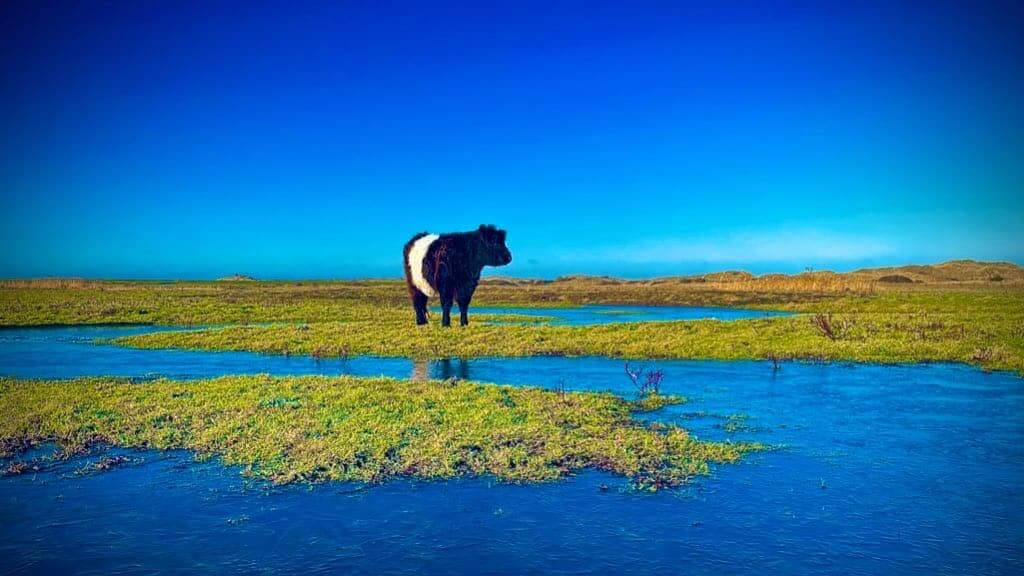
It doesn’t take much to see these rubbing up of different interests in action, perhaps a microcosm of the challenges facing rural areas more generally.
Walking through the fragile fossilised sand dunes behind Holkham’s sweeping beach, we see the remains of an illegal beach bonfire by campers who slipped the notice of Fiennes’ beach wardens. Elsewhere, the thriving pink-footed geese on the marsh wetlands is a win for nature, but their growing numbers means they have started grazing on the local sugar beet crop before harvest takes place, much to the annoyance of local farmers.
A patchwork of land ownership
As we stand on the dunes looking down the coast, it’s not quite possible to see the boundaries of Holkham’s 10,000-hectare spread. But if we could, or perhaps if we were looking from the perspective of one of the avocet or lapwings that migrate to its shores for the winter, we could see a patchwork of great estates that largely make up the land in this area. Fiennes recounts them as a list: Sandringham, Holkham, Barsham, Walsingham and more.
The area is clearly rich in more ways than one, both with its abundance of nature and abundance of wealthy landowners.
“What I like about private land ownership, or historic estates, is they’re in it for the long haul. It’s not short-term wins. It’s about longevity and purpose and legacy stuff,” says Fiennes, who after a career spent working for such estate owners “knows how they think”.
Interestingly, when he has questions of his own, he doesn’t turn to those estate owners but rather to those working their land – the gamekeepers, gardeners and foresters – traditional land-based roles where long-term knowledge is passed down through generations.
There’s also the odd professor or ecologist who he may call up, such as the one who advised him on the best way to create a natterjack toad habitat and have helped the freshwater marshes at Holkham, dotted with historic bomb craters, to become home to a thriving population of these rare amphibians. It was under that advice that Fiennes started grazing this area with a mixture of ponies and Belted Galloway cattle – a low intensity grazing model that regenerative farmers will know well.
Though regenerative is not a word Fiennes likes to use – another sign of his reluctance to sign up to one tribe over another. He has a similar aversion to the other buzzy ‘R’ word – rewilding – and prefers instead the Isabella Tree and Knepp-coined ‘wilding’.
“It’s about understanding process, whether that’s ploughing a field, planting a hay meadow or reducing the stocking density to allow scrub to develop, or periodically digging out these,” he says, pointing to the craters. “This is what started it out for the toads. It’s the process of succession: they used to be favourable for avocet, now it’s favourable for toads, in the future it will be favourable for bitterns.”
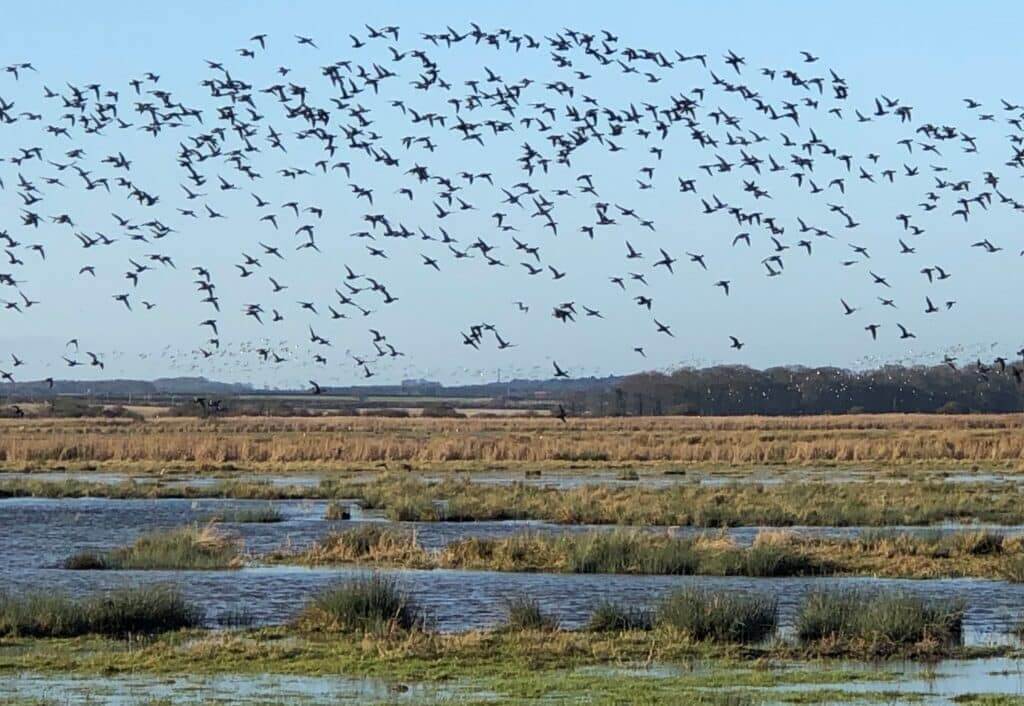
Land history and Holkham
Holkham itself has a long history of agricultural knowledge sharing, hosting the annual ‘Holkham shearings’ that were used to share farming practices, not unlike a medieval Groundswell. Like many areas of the UK, it has also experienced a darker side of land history. Under the Enclosures Acts of the 15th century, which allowed landowners to enclose common land into fields, common land from the nearby village of Wells was acquired by the then Lord Coke of Holkham – something still talked about locally.
The modern-day relationship of the estate with its 15 or so farming tenants is not strictly under Fiennes’ remit, but his description of land as “the asset of the landowner that needs to be maintained” is perhaps slightly at odds with some parts of the sustainable food movement, which has begun to address these questions of social justice and who benefits from the green transition.
Like his book, Fiennes’ answers lean towards the practical rather than social; he points to the UK’s network of hedges as having the biggest potential for connecting up areas of nature restoration.
But he is also deeply aware of the forces that lock many farmers, whether tenant or owner, into an exploitative system – moving easily into a language not a million miles away from food sovereignty activists like Vandana Shiva.
There are some very big multinational corporations that are feeding billions of people, right from the seed to the machinery, to the supply chain to the packers. It’s a monopoly and it’s getting close to a cartel.
Fairness to farmers
“We have four companies globally running our food systems,” he explains. “There are some very big multinational corporations that are feeding billions of people, right from the seed to the machinery, to the supply chain to the packers. It’s a monopoly and it’s getting close to a cartel. And that’s the problem.”
What would help release farmers and our landscape from these forces? There is plenty at play in new government subsidies to pay British farmers to protect the environment, much of which Fiennes has been closely involved in shaping. But he also has other ideas.
“Legally, you can’t sell food in Europe below the cost of production. A really simple thing. When you see carrots at Christmas for 15p a kilo; it’s phenomenal and appalling. The amount of money that farmers are asking for – they’re not looking for excess profits. They’re looking to maintain their business and invest in the future and have businesses that are resilient to climate change.
“On the flip side, if the average side of an English farm is 250 acres – the average size of a French farm is a similar size, but a lot of French farmers have other jobs. So how can we have those traditional family farms [where] you can only realistically provide an income for one family?”
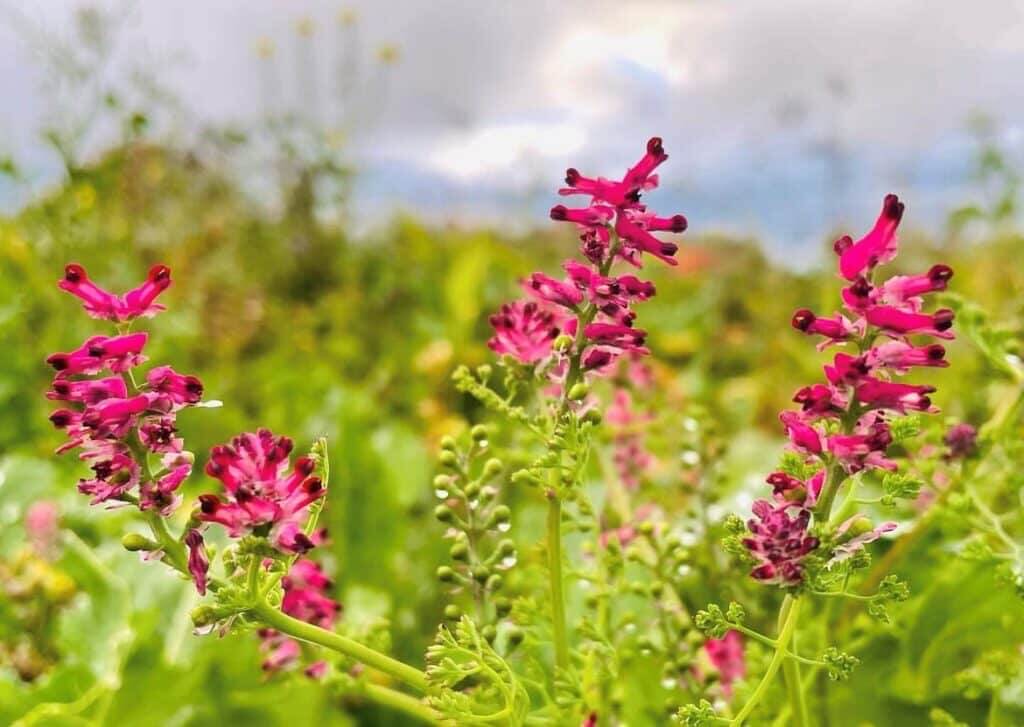
In this quest for viable income to fund his vision for nature protection, Fiennes is dabbling in the nascent corporate investment in biodiverse farming. This concept is about to take off with a new law in November, which will mean building developers will have to offset any nature loss by investing in biodiversity ‘credits’.
While he is piloting such an offset project, using funding from a local jewellery company to build a biodiverse hay meadow, he “won’t touch carbon at the moment because no one really understands it”. “I like the concept of it, but there’s no consensus,” he says.
The difference between Land Healer and Regenesis, is that Land Healer is real-time solutions, as opposed to Regenesis is looking quite a way forward.
Unusually, for someone so in tune with farming livelihoods, he also doesn’t write off Monbiot’s extreme vision of a limited farm future propped up by lab-based fermentation techniques. In fact, he brings it up unprompted in a willingness to address what can send many farmers and land owners into fits of hysterical social media fury.
We’re talking about what the future holds for Norfolk, home to some of the flattest land in the UK that will see the most impact from sea levels rising from the climate crisis. “Look at the area that produces close to 30 per cent of our food, The Fens – that disappears,” he says.
“So I think some of what George says…” he pauses, “the difference between Land Healer and Regenesis, is that Land Healer is real-time solutions, as opposed to Regenesis is looking quite a way forward. I don’t like using the R word, but we had a discussion a while ago that said isn’t the nature reserve a prime example of rewilding?”
From rewilding to market forces, Fiennes has far-reaching views on the food system and its impacts – though he is ever alert to the presence of wildlife at every turn and lights up at talk of how the seasons bring new visitors in migrating bird populations and new colours in the hedgerows.
“It’s amazing how the language around food security and self-sufficiency has changed in the last 12 months. If we hadn’t had Covid and Ukraine, how different would everything be? We were on a trajectory for wilder nature and that’s actually rowed back a bit. Which I think is a good thing,” he says, practical as ever. “Yes, everyone is talking about the local farm shop. But actually that feeds a very small part.”
We were on a trajectory for wilder nature and that’s actually rowed back a bit.
He certainly has a confidence and authority that makes it easy to see why so many people come calling for advice – many anecdotes start with “someone asked me…” – at a time of conflicting information and growing urgency around how we manage land and what we should eat.
Perhaps leading in their field is a family trait, although Fiennes is seemingly the only sibling to have taken this literally with his reputation solidly in land and conservation.
Fiennes’ brothers, twin Joseph and older brother Ralph, are, of course, notable for their achievements in acting – while a distant relative was the visionary explorer Ranulph. While his siblings all received a copy of Land Healer, says Fiennes drily, he doesn’t know if it was read, so there are presumably no current plans for a movie adaption – more is the pity.
As we complete our tour, we pass birders, dog walkers, horse riders and families parking up and getting ready to enjoy the estate as we drive past – unaware of how their experience of nature, and how others protect, lobby, farm and legislate for it, is being subtly shaped by the driver of the silver SUV.
Land Healer by Jake Fiennes (Penguin, £10.99) is out in paperback now.

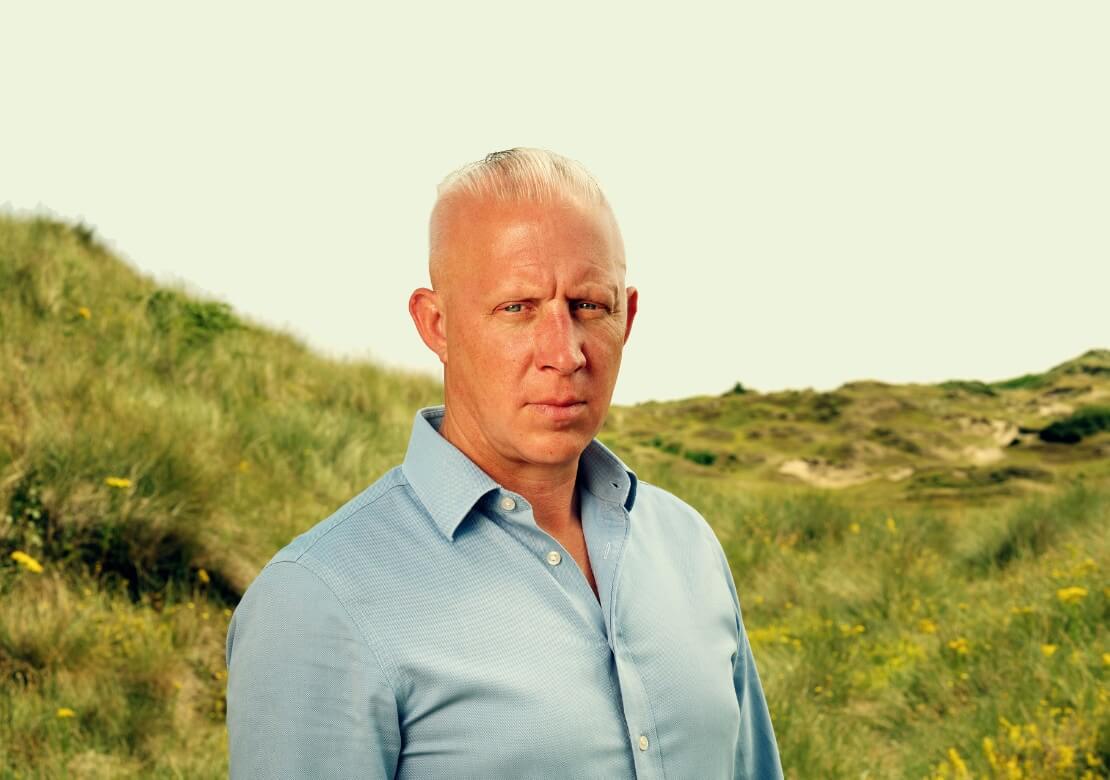

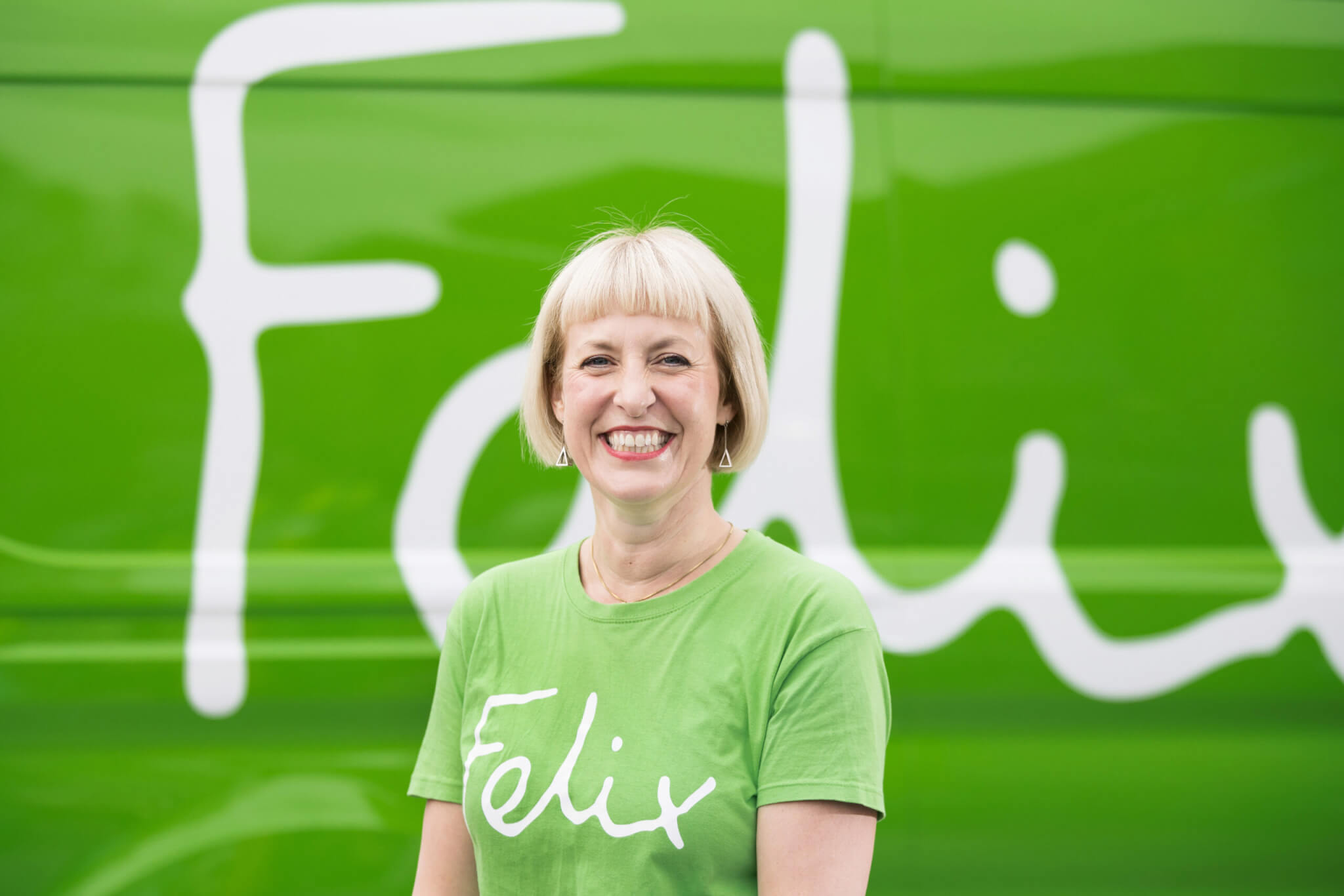





0 Comments